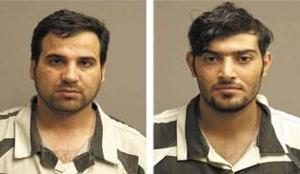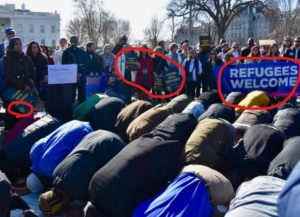What! How can this be? Too many refugees are arriving in one location in a year that we are told has one of the lowest arrival rates of all time.

Bowling Green, by the way, is the location where those Iraqi refugee terrorists were found about eight years ago and it is Senator Rand Paul’s hometown.
It has been a controversial resettlement location for years, see my archive here.
There is one important bit of information you need to pay attention to as you read about how the schools can’t cope. Hint! It involves a key component of Trump’s recent Executive Order that seeks to allow some cities and states to turn away refugees.
From Bowling Green Daily News:
Local schools ‘overwhelmed’ by refugee arrivals
The Bowling Green International Center is working with a special stakeholder group that will address local school superintendents’ concerns that their schools have been “overwhelmed” by the number of refugee arrivals in recent years.
“We’re barely getting by,” Warren County Public Schools Superintendent Rob Clayton said.
Clayton was joined Thursday by Bowling Green Independent School District Superintendent Gary Fields at the International Center’s fourth quarterly meeting with local resettlement stakeholders. [Just a reminder that you—members of the public—should be admitted to these meetings, but I know the contractors do everything in their power to keep the public out.—ed]
Together, the two superintendents emphasized a need for what they described as a more sustainable approach to refugee resettlement.
“We’re at capacity,” Fields said, describing the dearth of resources available to current English learner students in his school district.
By the end of the school year, Fields said, his district anticipates reaching the 20 percent mark for students classified as English learners. In Warren County Public Schools, one in five students fall into that category.
“As of September, we will have 190 Swahili speakers in our school district,” he said. “We have one translator.”
[….]
In some cases, due to the nature of their persecution and displacement from their homeland, refugees have interrupted educational experiences.
Bearing the responsibility for educating those students is sometimes a Herculean effort, Clayton said, citing an example of a 19-year-old student with no formal education.
[….]
Overall, the center received 513 refugees as of Sept. 20. That’s up from 297 refugees resettled in Bowling Green during the previous fiscal year.
Here it is, the major point I want you to see. Refugees are placed with family members who came before them so that once you have a contingent of certain ethnic groups in your ‘welcoming’ town or city more of that ethnic group will follow.
Also, note that there is no way to control “secondary migration” as refugees are permitted to move and often do for jobs or to be with their own kind of people.
Despite the uncertainty around what number the Trump administration would set, the Bowling Green International Center has seen a steady stream of arrivals.
This is mainly due to the role a refugee’s U.S. ties play in the resettlement process.
Refugees can ask to be resettled with family members already established in the country.The International Center also sees a significant number of “secondary migrants,” who initially resettle in other parts of the country and then travel to Bowling Green, often seeking work.
So, although you may hear the contractors squawking about Trump’s plan to let communities (or states) decide if they want more refugees, once a seed community is established there is usually no going back and the resettlement contractors know it.




 Just a cooperative ministry of 37 Christian denominations?
Just a cooperative ministry of 37 Christian denominations?



